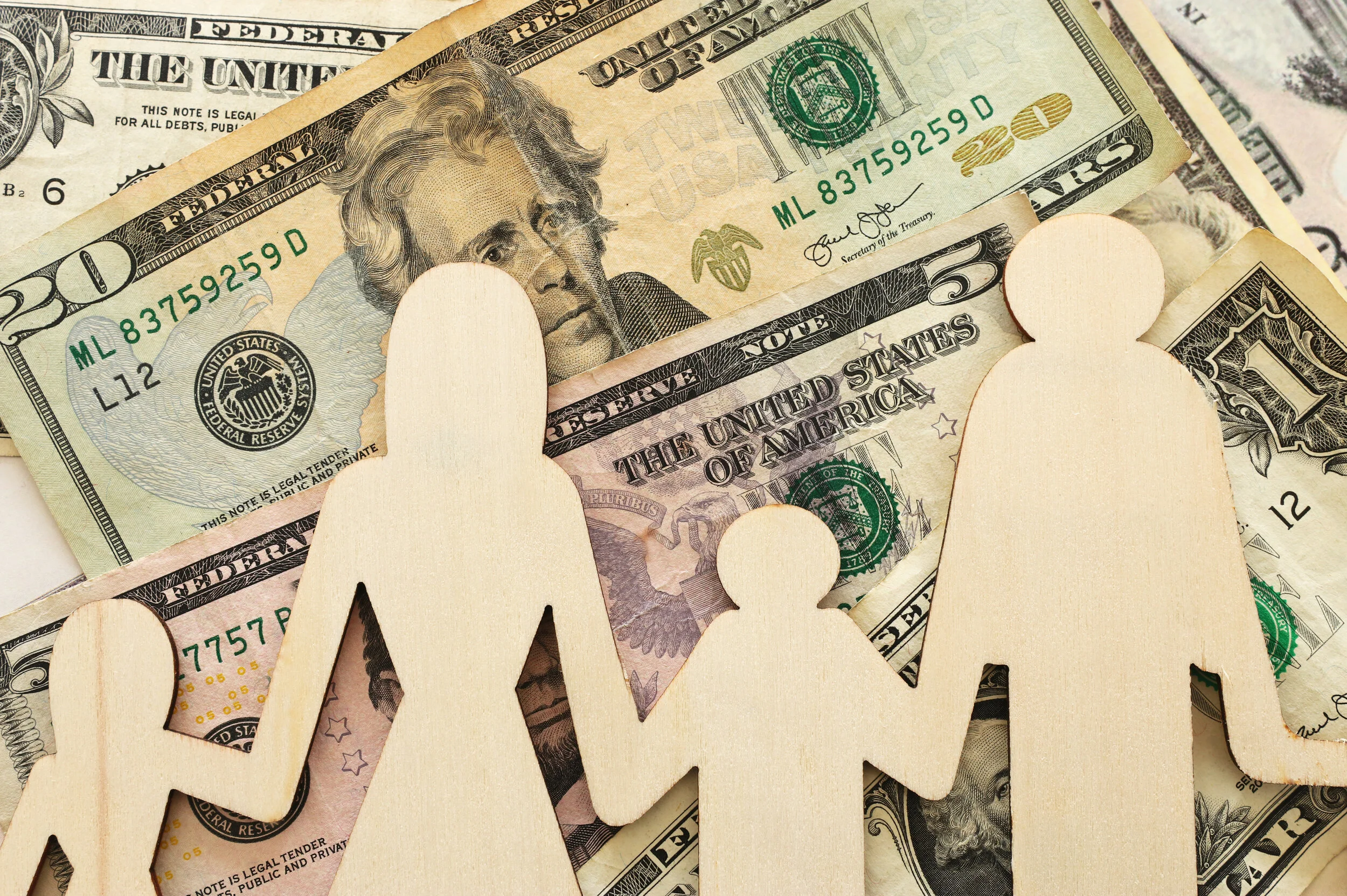While corporations are at historically high levels of debt relative to assets, leverage remains close to its historical average relative to firms’ market value and relative to interest expense as a fraction of cashflow. In PWBM’s dynamic firm model, reducing the deductibility of interest expenses by 10 percentage points decreases corporate output by 0.26 percent while decreasing corporate debt by 6.76 percent.
President Biden’s $2.7 Trillion American Jobs Plan: Budgetary and Macroeconomic Effects
PWBM projects that the American Jobs Plan proposed by President Biden would spend $2.7 trillion and raise $2.1 trillion dollars over the 10-year budget window 2022-2031. The proposal’s business tax provisions continue past the budget window, decreasing government debt by 6.4 percent and decreasing GDP by 0.8 percent in 2050, relative to current law.
Demographic and Economic Effects of President Biden's Proposal to Legalize Immigrants
PWBM projects that by 2050, the legalization provisions of the U.S. Citizenship Act proposed by President Biden would increase the size of the U.S. population by 4.21 percent, increase GDP by 0.5 percent, but decrease GDP per capita by 0.2 percent. More specific legalization proposals targeted at farm workers, DACA recipients, and essential workers would each increase GDP per capita by 0.1 percent in 2050.
Health and Economic Effects of Reducing COVID-19 Vaccine Hesitancy
PWBM projects that vaccinating all those eligible by reducing vaccine hesitancy would prevent up to 8.3 million cases in 2021, increase employment by 2.6 million in December 2021, and boost Q4 2020 to Q4 2021 GDP growth by 2 percentage points. In fact, failure to reduce vaccine hesitancy could lead to a “perfect storm” if people also become optimistic and increase their social contact rates beyond the baseline rates that we previously projected. Indeed, increasing social contact rates to 85 percent of pre-COVID levels by the end of 2021 would lead to up to 4.6 million additional COVID-19 cases in 2021.
Budgetary and Economic Effects of Senator Elizabeth Warren’s Wealth Tax Legislation
PWBM projects that the Ultra-Millionaire Tax Act of 2021, introduced by Senator Elizabeth Warren, would raise $2.1 trillion over the standard 10-year budget window (2022-2031) under scoring conventions used by government agencies. Incorporating the effects of enhanced IRS enforcement, our projection rises to $2.4 trillion over 2022-2031 and $2.7 trillion over 2023-2032. Also incorporating macroeconomic effects of the Act reduces estimated revenue to $2.0 trillion over 2022-2031 and $2.3 trillion over 2023-2032. We estimate that the Act would reduce GDP by 1.2 percent in 2050.
COVID-19: Cost of virtual schooling by race and income
PWBM estimates that schools in the Philadelphia and surrounding suburb districts with more Black students are less likely to reopen with in-person instruction relative to schools with more White students, even after controlling for differences in income by district. By March 2021, Black students in grades K-5 have incurred a 11.9 percent loss in lifetime income from school closures while White students have lost 10.4 percent. Students educated in the city face larger losses than students educated in the surrounding suburbs.
Epidemiological and Economic Effects of the COVID-19 Vaccine in 2021
This brief analyzes the epidemiological and economic effects of maintaining, increasing, or decreasing the current pace of daily COVID-19 vaccinations. PWBM projects that doubling the number of vaccine doses administered daily would boost employment by more than 2 million and real GDP by about 1 percent over the summer of 2021, with smaller effects later in the year.
PWBM Budget Contest: Privately-Organized Universal Health Insurance in the U.S.
This brief analyzes the impact on health insurance premiums, out-of-pocket spending, and the economy for the healthcare proposal from Daniel Evan McGary as part of the PWBM Democratizing the Budget Contest.
Direct Aid in the Biden COVID Relief Plan: Budgetary and Distributional Effects
PWBM estimates that three provisions in the Biden COVID relief plan—direct payments, expanding the Child Tax Credit, and expanding the Earned Income Tax Credit—together would cost $595 billion in calendar year 2021, with 99 percent of households in the bottom 80 percent of incomes receiving a benefit.
Macroeconomic Effects of the $1.9 Trillion Biden COVID Relief Plan
PWBM estimates that the $1.9 trillion in spending in the full Biden relief plan would increase GDP in 2021 by 0.6 percent. Over time, the additional public debt resulting from the Biden plan would decrease GDP by 0.2 percent in 2022 and 0.3 percent in 2040.
Background: Marginal Propensities to Consume in the 2021 Economy
PWBM projects that the broad distribution of relief payments in the Biden administration’s proposed plan will flow largely into household savings and will produce only small stimulative effects, with 73 percent of the stimulus going directly into household savings. Sectors affected by the pandemic still face restrictions and are unlikely to grow from stimulus payments, while much of the rest of the economy is operating close to productive capacity.
PWBM Budget Contest: TEACHUP Early Childhood Education Grants
The TEACHUP program, proposed by Rick Miller, Ph.D. as part of the PWBM Democratizing the Budget Contest, would give grants to states in order to provide full-day preschool for four-year-old children at or below 200 percent of the poverty line. On a conventional basis, PWBM projects that TEACHUP would cost $92.4 billion over ten years and a total of $282.53 billion by 2050. However, on a dynamic basis that includes productivity effects and expansion of the tax base, PWBM estimates that the program would effectively pay for itself by 2050 by holding public debt nearly constant.
School Reopening During COVID-19: A Cost-Benefit Analysis for Philadelphia Suburbs
We estimate the average cost of a COVID-19 infection for four Philadelphia-area counties at $8,000 to $13,000, less than half of our national average cost estimate ($27,230). We estimate a trade-off between cost of infections to the community from in-person schooling versus the lost future earnings to students from closing schools. For example, if Montgomery county had implemented full in-person school in the fall, we project the costs of infection would have been at most $429 million. However, closing schools costs students as much as $4.4 billion in present value of future wages.
COVID: Trade-offs in School Reopening
We estimate that each month of school closures in response to the COVID pandemic cost current students between $12,000 and $15,000 in future earnings due to lower educational quality. We also estimate total value-of-life, medical, and productivity costs per infection at $38,315 for September 2020. Using these costs, we calculate the cost-benefit threshold to keeping schools closed for October at over 0.355 new expected infections in the community per student kept out of school.
Biden’s Healthcare Proposals
The Biden healthcare plan focuses on expanding access and affordability of insurance and decreasing prescription drug prices. We estimate that by 2030, relative to current law, the Biden plan would decrease the uninsurance rate from 10 percent to 6 percent, decrease private insurance premiums by 23 percent and out-of-pocket spending by 16 percent, and decrease the percent of the population that forgoes medical care from 7 percent to 4 percent. The Biden healthcare plan would increase net spending by $352 billion over ten years but would reduce debt by 4.5 percent over that period due to dynamic growth effects.
Analyzing President Trump’s Proposed Capital Gains and Dividend Tax Cut
PWBM estimates that reducing the top preferential rates on capital gains and dividends from 20 percent to 15 percent will cost $98.6 billion dollars over the ten year budget window. This tax cut will only benefit tax units in the top 5 percent of the income distribution, with 75 percent of the benefit accruing to those in the top 0.1 percent of the income distribution.
Dynamic Distributional Analysis of the Biden Platform
PWBM uses dynamic distributional analysis to evaluate the effects of the Biden platform on different age and income groups. We find that working-age individuals in the bottom 40 percent of taxable income benefit the most due to expanded health insurance, increases in housing subsidies, and lower cost of prescriptions in the Biden platform, while young, high-income individuals and wealthy retirees see net losses due to tax increases and lower returns on their savings.
Macroeconomic effects of Biden’s immigration policy
Using PWBM’s dynamic model, we show the macroeconomic effects of Presidential candidate Biden’s immigration proposal. By 2050, GDP increases by 1.7 percent in 2050 relative to current law while GDP per capita stays the same.
Presidential Candidate Joe Biden’s Proposed Child Tax Credit Expansion
Presidential candidate Joe Biden recently announced a proposal to temporarily expand the Child Tax Credit (CTC). We find that this proposal would cost $110 billion if implemented solely for calendar year 2021 and would cost $1.4 trillion over ten years if extended permanently. While higher income households are more likely to have qualifying children and would see larger average tax cuts ($1160 for the 90-95th percentile), lower income groups would see the largest relative benefit, with after-tax incomes increasing by 9 percent for the bottom quintile.
PWBM Analysis of the Biden Platform
Presidential candidate Joe Biden’s campaign has released a substantial list of policy proposals. PWBM finds that over the 10-year budget window 2021 – 2030, the Biden platform would raise $3.375 trillion in additional tax revenue and increase spending by $5.37 trillion. Including macroeconomic and health effects, by 2050 the Biden platform would decrease the federal debt by 6.1 percent and increase GDP by 0.8 percent relative to current law. Almost 80 percent of the increase in taxes under the Biden tax plan would fall on the top 1 percent of the income distribution.





















